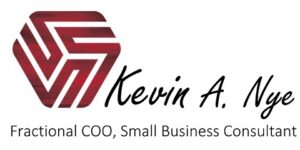As the name suggests, cash flow forecasting is the process of creating a detailed list of cash inflows and outflows that your business can expect to make in the future. A cash flow forecast can be used for budgeting as well as investment decisions. However, very few businesses actually make the effort to create one. This is usually the result of underestimating its importance and usefulness.
Cash flow problems are the main reason why businesses fail.
Read also: 5 Reasons You Have Cash Flow Woes and What To Do About It
If created correctly, a cash flow forecast can offer several benefits. Following, we will be discussing how you can create a cash flow forecast and its use in running your business.
Understanding the Structure of a Cash Flow Forecast
Before you create a cash flow forecast, it is important to understand how it is divided into two parts. You will have the short-term cash flow (this predicts cash flow for the next month) and the medium-term cash flow (this predicts the cash flow that can be expected after the first month).
The two cash flows differ significantly in terms of their accuracy and how they are calculated. A short-term cash flow forecast is usually fairly accurate. It makes use of information from current inflows such as your accounts receivable, and expenditures (payroll records, accounts payable, etc).
A medium-term cash flow forecast begins from where the short-term forecast ends and extends into the future. You can choose the period depending on your funding and investment strategies. For example, if you are looking to invest in something six months from now, then your medium-term cash flow forecast will reflect the number of cash inflows and outflows expected for five months. The first month will be covered in a short-term forecast.
Medium-term cash flows are determined through formulas. For instance, if you want to determine the amount of cash required to pay for your cost of goods sold, then you can calculate this as a percentage of expected sales. You will also be adding the payments made to your suppliers to this (with a time lag factored in).
Creating a Cash Flow Forecast
In order to create a cash flow forecast, you will need to consider the following:
- Revenues
- Expenses
- Assets
- Liabilities
- Capital
Step 1: Calculating Your Earnings
The first thing that you need to do is estimate the amount of money you expect to earn within a particular period. You can look at your income statements from the last two to three years to determine this.
Check how much money your company has generated in sales revenue and use this as a basis to calculate future earnings. You will also need to take sales patterns into account. For instance, check your sales patterns during holiday seasons and otherwise. These differences will factor in your sales forecast.
You must also include the earnings that are likely to come from other sources. These include:
- License or royalty fees
- Investment income
- Tax rebates and tax refunds
- Government grants
- Contributions to equity
- Loan proceeds
- Insurance proceeds
- New contracts
- New product launches
It’s important to know when you will be receiving payment for your sales. This depends on the nature of your business, as average collection days can vary widely by industry.
For instance, if you have a retail business, you can expect to get paid as soon as your inventory is sold. However, in other businesses, you may receive payment after a month or even later. Therefore, it is important that you also keep an eye on your cash conversion cycle to prepare an accurate sales forecast.
Also read: Inventory Management Techniques For Effective Inventory Planning
Once you have identified your estimated sales and other sources of revenue, make a list of your estimated earnings on a weekly or monthly basis. This will depend upon the length of your cash flow forecast.
Remember, your earnings are an estimate of your cash inflows for a particular period.
Step 2: Calculating Your Expenditures
The next step is to prepare a list of your expenditures. These are your cash outflows. You must include both your fixed and variable expenses here. Fixed expenses include office rent and employee salaries. Variable expenses include your electricity bill, phone bill, raw material expenditures, etc.
Some expenses will depend upon the nature of your business. However, most businesses tend to incur the following expenditures:
- Utilities
- Raw materials
- Employee salaries
- Packaging and distribution costs
- Marketing costs
- Interest expenses
- Loan repayments
- Purchase of assets
When you are calculating your cash outflows, make sure you calculate your cost of goods sold. Cost of goods sold (often referred to by its acronym; COGS) is the direct cost incurred in the manufacturing or purchasing of products sold. It is the amount of money spent on raw materials, labor, and overheads.
Your cost of goods sold is subtracted from your revenue in sales to determine gross profit.
Step 3: Preparing a Cash Flow Forecast
In the first two steps, you prepared an estimate of your cash inflows and outflows. Now, you must put everything together and create a cash flow forecast. A basic template of a cash flow forecast will look like this:
| Month | August | September | November |
| Opening Balance At The Beginning of the Month | $100 | $500 | $950 |
| Cash Inflows | $1,000 | $1,100 | $1,200 |
| Cash Outflows | ($600) | ($650) | ($700) |
| Closing Balance at the End of the Month | $500 | $950 | $1,450 |
*Please note that the numbers inputted in the table above are not from any actual organization. They have simply been used to explain how a cash flow forecast is made.
In order to prepare a cash flow forecast, you must first write your opening balance at the beginning of the period. Next, you must add all your predicted cash inflows to this amount. Now, subtract your predicted cash outflows. The final amount will be your closing balance at the end of the period. This amount will also be your opening balance at the beginning of the next period.
Preparing a cash flow forecast is not that hard. What’s complicated is calculating your estimated cash inflows and outflows.
Step 4: Reviewing Your Cash Flow Forecast
This is another crucial step in preparing a cash flow forecast. Once you have made a cash flow forecast for a certain period, you must go back and compare your actual cash flows against the estimated amount. Make a note of any differences between the two.
This is important because it will help you analyze where your cash inflow or outflow deviated from the expected amount. Once you have made a note of the differences, you can improve the accuracy of future cash flow forecasts.
The Importance of Cash Flow Forecasting
There are several benefits of preparing cash flow forecasts to estimate the cash position of your business. It helps you understand how much money is coming into your business and how much is going out. Cash flow forecasting helps you identify potential shortages in cash.
It can also help you prepare a contingency plan. For example, if a cash flow forecast shows that your cash balance is coming up to be extremely low or is in the negative, then you can take steps such as cutting down on your operating costs.
Cash flow forecasting also helps determine whether you can afford to invest in a future business opportunity or hire more employees. This can help minimize the risk associated with certain investment decisions.
Tips for Creating a Cash Flow Forecast
If you are struggling with estimating your cash inflows and outflows correctly, then these tips can help you out:
- Never overestimate the sales you are expecting to generate for a particular period. When it comes to estimating sales, it’s best to be a little pessimistic. You can also employ an approach adopted in project management where the estimated time for a project activity is broken down into pessimistic time, realistic time, and optimistic time. This can help you prepare for a scenario where nothing goes according to plan.
- Make sure you account for variations in sales generated over a certain period. There is no such thing as a consistent sales pattern in any business.
- Make sure you calculate the overhead costs for your purchases or manufactured goods. This will have a significant impact on your cash outflows.
Final Thoughts
Cash flow forecasting is an essential part of business planning. In order to create a cash flow forecast, you must take into account your revenues, expenses, assets, liabilities, and capital, and the impact they have on your cash position.
Make sure you account for all possible sources of cash inflows and outflows during a certain period. If you miss a single potential source, it will have a significant impact on the accuracy of your cash flow forecast.
Your cash flow forecast will influence your decisions regarding all aspects of your business, so it’s important that you try and make it as accurate as possible.


